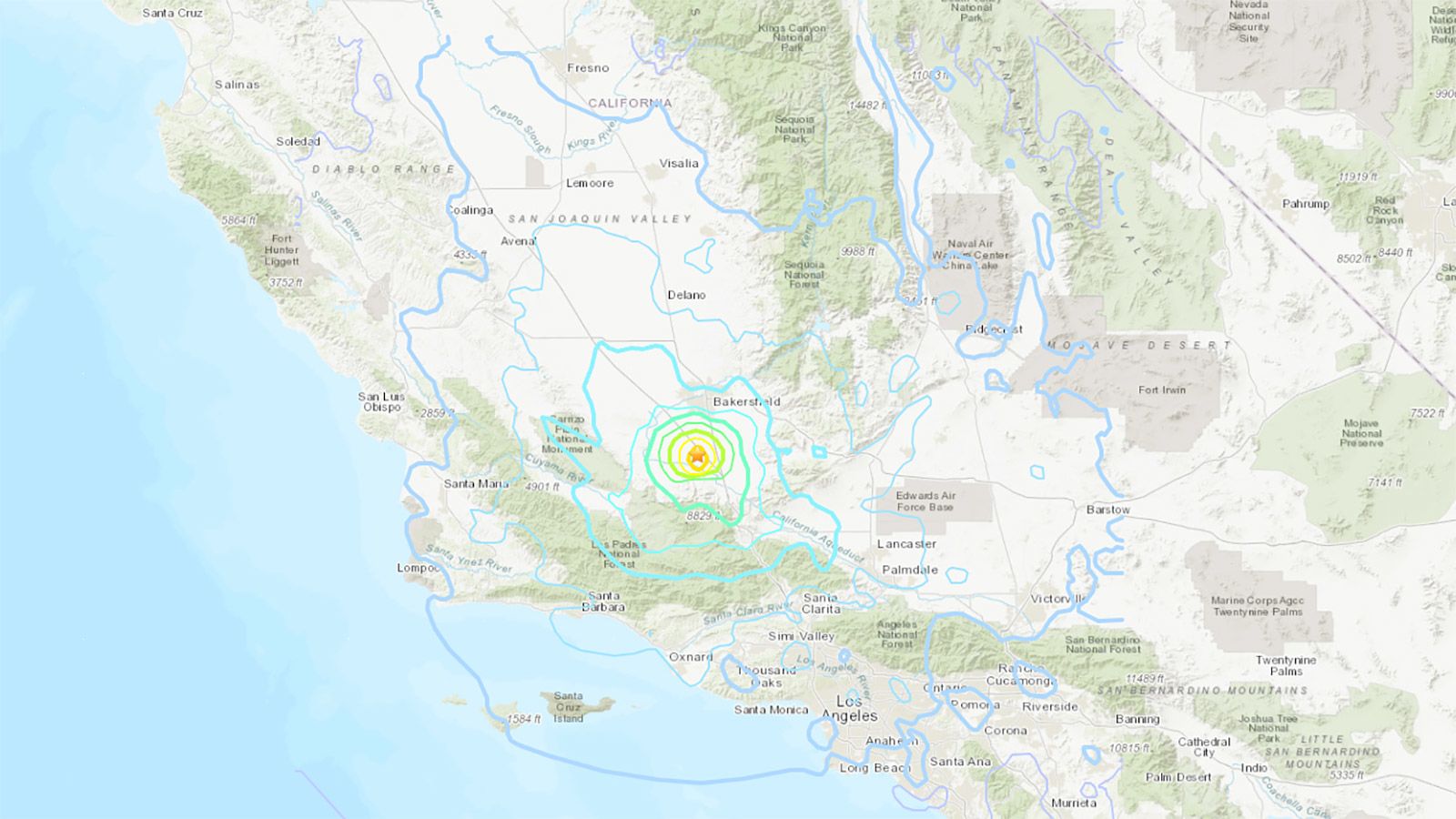A 5.2-magnitude earthquake struck near Lamont, California, on Tuesday night and rumbled through a broad stretch of Southern California, including Los Angeles.
The US Geological Survey reported the earthquake’s epicenter hit about 15 miles southwest of Lamont – and roughly 25 miles south of Bakersfield – around 9:09 p.m. PT. The survey earlier rated the earthquake a 5.3 magnitude but later downgraded it to 5.2.
People from Fresno to as far south as Temecula reported feeling the jolt, according to the agency’s tracker.
About 100 miles to the southeast of the epicenter, no significant infrastructure damage or injuries were noted in Los Angeles, according to the city’s fire department, which sent people from its fire stations to survey whether the area was impacted.
The US Geological Survey estimated a low likelihood of casualties or damage from the quake.
About 60 smaller quakes – rating as high as 4.5 – were recorded over the next hour, according to California Institute of Technology seismologist Lucy Jones.
Jones described the 5.2 magnitude earthquake as “robust,” saying, “A majority of (magnitude 5 earthquakes) would have fewer aftershocks than this.”
“Recently, we’ve had a rather quiet couple of decades,” Jones said, adding: “In Southern California, we’ve had seven (magnitude 5 earthquakes) in the last 10 years. But on the long-term average, it’s more like a couple a year.”
Still, Jones cautioned that Tuesday’s earthquakes should serve as a reminder that people should be prepared for larger – and perhaps more dangerous – quakes.
“One of the myths is that the small earthquakes release energy and make a big earthquake less likely, and that is not true,” Jones said. “So I think it’s a good time to remind people that in the long run, California is earthquake country. And in the long run, we (should expect) more earthquakes than we’ve been seeing for the last 20 years.”
Jones emphasized that while we cannot predict exactly when a large earthquake will strike, they are inevitable.
“The chance of a big earthquake is 100%. Just give us enough time,” she said.
Residents in earthquake-prone areas can prepare by identifying possible falling hazards in their home, creating an emergency plan and considering insurance coverage, among other actions, according to the Earthquake Country Alliance.
This is a developing story and will be updated.



